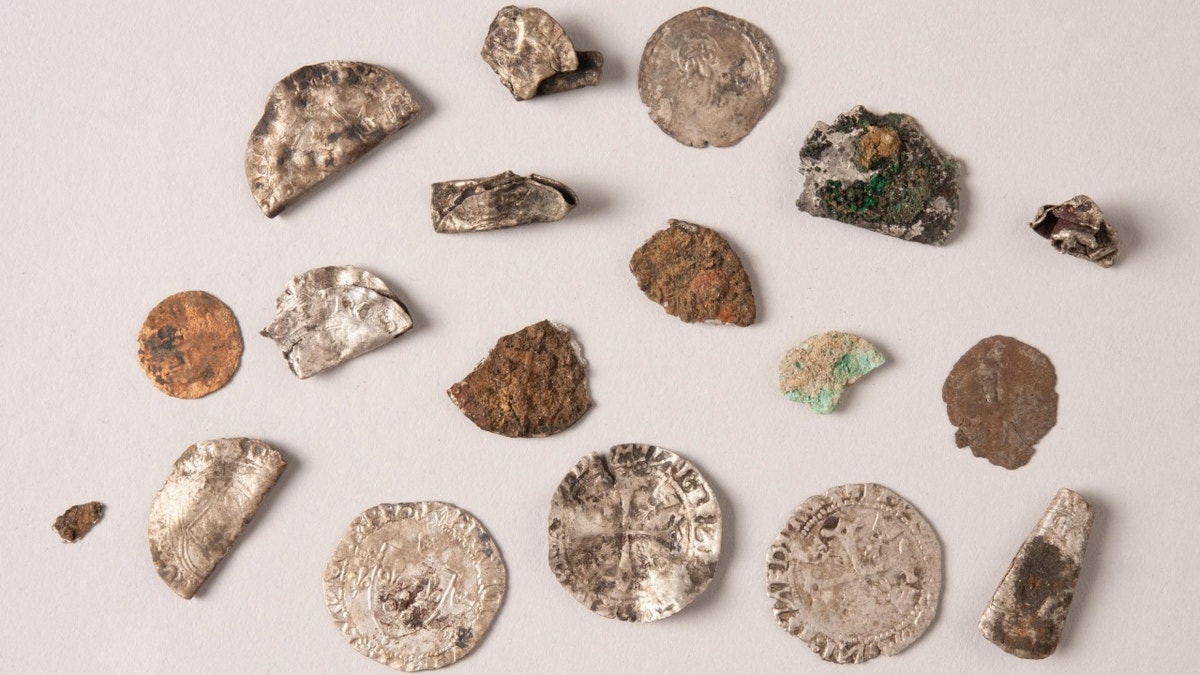Lady Violet Manners of 'Duchess' details life at Belvoir Castle
The daughter of the Duke and Duchess of Rutland is exploring historic homes in the U.K. and the women behind them in "Duchess The Podcast."
Archaeologists recently announced the discovery of a 14th century castle – complete with a moat – under a hotel in Vannes, France.
The castle, which has been identified as the Château de l'Hermine, was built by John IV the Conqueror in the 1380s. It is located under the courtyard of Hotel Lagorce.
In a March 26 press release translated from French, the National Institute for Preventive Archaeological Research (INRAP) explained that the excavations were carried out between the spring and autumn of 2023. Archaeologists were shocked by how relatively complete and well-preserved the castle's remains were.
"The excavation revealed little by little the plan of the ground floor: the ducal house, 42 meters long and 17 meters wide (out of work), is endowed with walls of an exceptional thickness," INRAP said. A ducal house refers to a house inhabited by a duke, which John IV was.
ANCIENT SHIPWRECKS, ARTIFACTS DATING AS EARLY AS 3000 BC UNCOVERED BY UNDERWATER RESEARCHERS

Painted tiles were found at the excavation site of a medieval castle in France. (Emmanuelle Collado / National Institute for Preventive Archaeological Research)
"Directly bordered by a moat, it is flanked to the west of what one can call a ‘square tower.’"
Researchers also discovered "several" staircases, one of which was "a remarkably preserved staircase, with a decorated core and three steps."
In addition, excavators found dozens of objects "related to the daily life of the castle," including coins, cooking dishes and jewelry.
MAN REVEALS ANCIENT COINS HE FOUND UNDER CHURCH 60 YEARS AGO: 'JUST CHILDREN ON A TREASURE HUNT'

Archaeologists discovered a mill, pictured here, at the site of the excavation. (Emmanuelle Collado / National Institute for Preventive Archaeological Research)
The humidity of the area also preserved remarkable wooden items, including fragments of barrels.
"In addition, archaeologists conducted a deep survey in the moat," INRAP said. "From this very wet material, they extracted rich furniture."
Archaeologists even found tiles covered with graffiti, padlocks for furniture and pieces of clothing.
CLICK HERE TO SIGN UP FOR OUR LIFESTYLE NEWSLETTER

Along with a castle, a medieval moat was also discovered by archaeologists. (Emmanuelle Collado / National Institute for Preventive Archaeological Research)
INRAP also said the site was incredibly well-managed.
"The homogeneity of the materials used for the construction of the castle and the standardization of the modules show a mastery of the management of the site throughout the operating chain, from the extraction of stone to its implementation," the INRAP release said.

A variety of medieval coins were discovered at the excavation site. (Emmanuelle Collado / National Institute for Preventive Archaeological Research)
"The construction… took place in a single phase, which testifies to the importance of the financial and human resources used," the statement added. "The remains indicate that John IV knew how to surround himself with the best engineers and craftsmen of their time."
CLICK HERE TO GET THE FOX NEWS APP
Fox News Digital reached out to INRAP for comment.




















